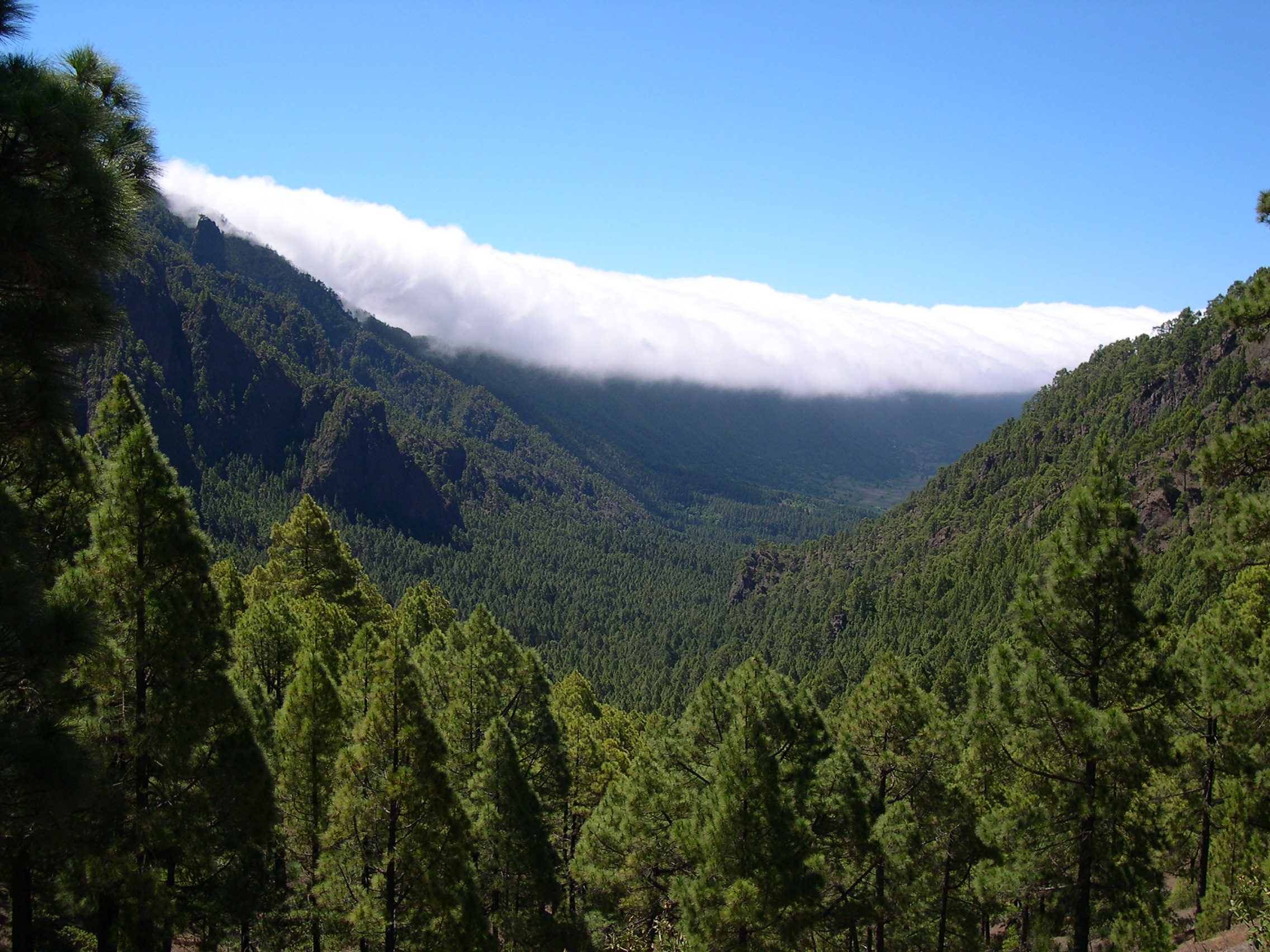- Pinus canariensis
Taxobox
name = Canary Island Pine
status = LC | status_system = IUCN3.1

image_width = 250px
image_caption = Canary Island Pines in Caldera de Taburiente,La Palma
regnum =Plant ae
divisio =Pinophyta
classis = Pinopsida
ordo =Pinales
familia =Pinaceae
genus = "Pinus"
subgenus = "Pinus"
species = "P. canariensis"
binomial = "Pinus canariensis"
binomial_authority = C.Sm.The Canary Island Pine ("Pinus canariensis") is a species in the genus "Pinus", family
Pinaceae , native and endemic to the outerCanary Islands (Gran Canaria ,Tenerife ,Gomera ,Hierro andLa Palma ) in theAtlantic Ocean . It is a subtropical pine and does not tolerate low temperatures or hard frost, surviving temperatures down to about −6 to −10 °C. Within its natural area, it grows under extremely variable rainfall regimes, from less than 300 mm to several thousands, mostly due to differences in mist-capturing by the foliage. Under warm conditions, this is one of the most drought tolerant pines, living even with less than 200 mm per year.It is a large
evergreen tree , growing to 30-45 m tall and 1.5 m trunk diameter, exceptionally up to 60 m tall and 2.5 m diameter. The green to yellow-green leaves are needle-like, in bundles of three, 15-30 cm long, with finely toothed margins and often drooping. A characteristic of the species is the occurrence of glaucous (bluish-green) epicormic shoots growing from the lower trunk, but in its natural area this only occurs as a consequence of fire or other damage. In fact, this pine is one of the most fire-resistant conifers in the world. The cones are 10-23 cm long, glossy chestnut-brown in colour, frequently remaining closed for several years (serotinous cones). Its closest relatives are theChir Pine ("Pinus roxburghii") from theHimalaya , the Mediterranean pines "Pinus pinea", "Pinus halepensis", "Pinus pinaster" and theTurkish Pine from the easternMediterranean .The native range has been somewhat reduced due to over-cutting so that only the islands of Tenerife and La Palma still have large forests. It is the tallest tree in the Canary Islands.
Cultivation and uses
The aromatic
wood , especially the heartwood, is among the finest of pine woods - hard, strong and durable. It is also popular as anornamental tree in warm climates. InSouth Africa andAustralia , this has become naturalized from landscape use.References
* Database entry includes justification for why this species is of least concern
Wikimedia Foundation. 2010.
